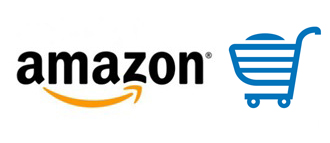Amazon continues to present one of the most lucrative channels for retailers looking to boost their e-commerce sales. The marketplace recently reported that third-party unit growth was up 40% year-over-year, more than two times the overall e-commerce growth rate (15% as reported by comScore).
Here we take a look at the Amazon opportunity for retailers, and how they can look to optimise their listings and sales process in light of ever-increasing competition.
Recent research conducted by ChannelAdvisor at Catalyst Europe, Europe’s leading e-commerce event, found that 56% of retailers are currently active on Amazon, making it increasingly important that listings are optimised to enhance the prospect of sales.
What’s important to distinguish is the difference between simply listing products and being successful on Amazon – often the difference lies in the ability to increase product visibility and meet Amazon’s customer service expectations:
Meet customer expectations
The top priorities for customers, according to Amazon, are selection, price, delivery, speed, convenience and product information. Amazon has a clear objective – to offer a positive shopping experience. To increase the chance of success, retailers must anticipate buyers’ needs and offer a positive customer experience.
One way for sellers to comprehend this customer expectation is to put themselves in the consumer’s shoes when considering the advertising of products. Conducting test searches for items and taking note of the purchase path can provide sellers valuable insight into their Amazon listings as well as the customer experience on their own online store.
List prolifically, price competitively, and deliver expediently
To increase exposure on the Amazon marketplace it is best for sellers to list as many products as possible. Additionally, it is important for sellers to implement a competitive pricing strategy to offer the best possible price on top selling items. To deliver items as fast as possible sellers should create a streamlined fulfilment strategy or consider Fulfilment by Amazon (FBA), a service allowing retailers to store inventory in a fulfilment centre where Amazon employees pick, pack and ship the items upon purchase to customers on behalf of the retailer.
Furthermore, sellers should educate consumers by providing as much information as possible in product data feeds including product specifics that can help overcome returns ahead of time and give the customer a good indication of the product prior to purchase. Most importantly, retailers should ensure inventory levels, product details and pricing changes are kept up-to-date on the marketplace to ensure customers are not met with any unexpected costs or disappointment.
Focus on the customer experience
Meeting customer expectations based on the requirements set by Amazon is crucial to Buy Box placement. Amazon’s success is built on a foundation of excellent customer service. Complying with this ethos can give sellers a chance to win the Buy Box – a feature that can boost sales on the marketplace. This advantage is only available only to the retailers Amazon considers suitable.
Retailers should be aware that there are many factors Amazon takes into account when considering offering the Buy Box including account seller performance and stock quantities – however meeting customer expectations is crucial to Buy Box placement.
By monitoring seller metrics on a daily basis, retailers can ensure compliance with Amazon’s standards. In particular, retailers should monitor key metrics such as service credit card chargebacks, A-to-Z Guarantee claims and Order Defect Rate, which is the percentage of orders that have received negative feedback.
This rate enables Amazon to measure overall performance with a single metric. For non-compliant retailers, this could mean a penalty or disqualification from Amazon, so be sure to measure carefully, and maintain your rating in order to secure your standing with Amazon.
Increase product visibility
Ensuring products are easily found on Amazon allows the retailer to be competitive. The search bar remains the primary method of use for consumers to find products and this tendency verifies that optimisation of keywords is a crucial activity. Sellers should create product titles that are descriptive yet understandable, using keywords and common terms and phrases, as this is the first place Amazon looks for keywords associated with a product search.
Additionally, titles should remain user-friendly and sellers should be aware that customers do not typically use punctuation, caps lock or asterisks when conducting a search so the inclusion of these is unnecessary.
Keywords are also pulled from search terms submitted by the seller, so retailers should be sure to use all 250 characters that Amazon allows. Title, merchant and brand are included in this section automatically, so repetition should be avoided.
Lastly, the left navigation tool should not be neglected, as browse nodes are the product codes that identify items in a particular product category. By attributing each product to two browse nodes, sellers can achieve maximum results for product visibility.
These simple tips will enable sellers to improve performance and maintain an Amazon mindset; remember that an optimal shopping experience is paramount, and will encourage repeat customers and increased revenue.






